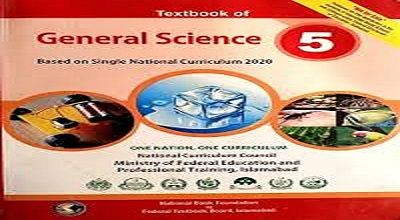Methods Of Reliability Of A Test
Methods Of Reliability Of A Test: In the ever-evolving field of education, ensuring the reliability of tests is crucial. Reliable tests provide consistent results over time, allowing educators and researchers to make informed decisions. This article explores the various methods of reliability in testing for 2024, focusing on their application in modern educational settings.
What Is Test Reliability?
Test reliability refers to the consistency and stability of a test’s results over time. If a test consistently produces similar outcomes under consistent conditions, it is considered reliable. In educational settings, reliability ensures that the test accurately measures what it intends to, providing a dependable basis for assessing students’ abilities or knowledge.
Importance of Test Reliability
Reliability is fundamental for ensuring that assessments are fair and valid. It helps educators, administrators, and policymakers to make sound judgments based on the data collected. Inconsistent testing results can lead to incorrect conclusions about students’ abilities, affecting academic decisions and policies.
Types of Reliability
Test-Retest Reliability
- Definition: This method assesses the consistency of test results over time. The same test is administered to the same group of individuals on two different occasions.
- Application: For example, a language proficiency test administered at the start and end of the semester should yield similar results for a reliable measure.
- Advantages: Offers insights into the test’s stability over time.
- Limitations: Requires a gap between testing sessions to avoid memory effects.
Parallel-Forms Reliability
- Definition: This method involves creating two equivalent forms of a test and administering them to the same group. The scores from both forms are then compared.
- Application: Useful in situations where repeated administration of the same test could lead to memorization.
- Advantages: Reduces the chance of memory and practice effects.
- Limitations: Developing equivalent forms can be challenging and time-consuming.
Internal Consistency Reliability
- Definition: Internal consistency measures how well the items on a test measure the same construct. It’s commonly measured using Cronbach’s Alpha or the Kuder-Richardson Formula (KR-20).
- Application: Common in questionnaires and surveys to ensure all items consistently assess the intended construct.
- Advantages: Requires only one test administration.
- Limitations: Does not provide information on test stability over time.
Inter-Rater Reliability
- Definition: Inter-rater reliability assesses the level of agreement between different raters or scorers.
- Application: Used for subjective assessments, such as essay grading or performance evaluations.
- Advantages: Enhances objectivity in scoring.
- Limitations: Requires training and calibration of raters.
Methods to Measure Reliability in 2024
Using Modern Technology for Test-Retest Reliability
In 2024, technology has made it easier to administer tests consistently across different times. Automated scheduling systems and online platforms ensure that tests are conducted under similar conditions. Data analytics tools can then compare results from different time points to assess reliability.
Online Tools for Parallel-Forms Reliability
Creating equivalent forms of tests is now more feasible with the help of AI-powered test generators. These tools can generate items that match the difficulty and content of the original test, making the development of parallel forms more efficient.
Software for Internal Consistency (Cronbach’s Alpha, Kuder-Richardson)
Statistical software like SPSS, R, and specialized educational platforms offer automated calculations of internal consistency. By incorporating these into test development, educators can quickly assess the reliability of their assessments.
Enhancing Inter-Rater Reliability with Digital Platforms
Modern educational platforms now include inter-rater calibration tools, allowing teachers and examiners to practice scoring and discuss discrepancies in real time. Video tutorials and rubrics can be shared within these platforms to standardize scoring practices.
Factors Influencing Test Reliability
Several factors can affect the reliability of a test, including:
- Test Length: Longer tests generally have higher reliability because they provide a more comprehensive assessment.
- Test Environment: Distractions, noise, and comfort levels during testing can influence results.
- Participant Characteristics: Individual differences like test anxiety, motivation, and fatigue can affect performance, impacting reliability.
Improving Test Reliability: Best Practices for 2024
- Standardize Testing Conditions: Use technology to monitor and control testing environments, ensuring consistency.
- Use Technology-Assisted Scoring: Incorporate AI-driven scoring systems to reduce human error in subjective assessments.
- Training Raters: Utilize online training modules to improve inter-rater reliability among educators.
- Pilot Testing: Conduct pilot tests to identify potential issues in test design and adjust accordingly.
- Regularly Review Test Items: Use data analytics to identify and revise items that may compromise reliability.
Challenges in Maintaining Reliability in Modern Testing
With the rapid shift to online education and remote assessments, new challenges arise in maintaining test reliability. Test security, varying internet access, and diverse environments can affect students’ performance, potentially impacting reliability. Implementing proctoring tools and adaptive testing methods can help mitigate some of these challenges.
Conclusion
Reliability is the cornerstone of effective testing. In 2024, advancements in technology offer new tools and methods to enhance the reliability of educational assessments. By understanding and applying the appropriate methods, educators can ensure that their tests are consistent, fair, and valuable tools for measuring student performance.
FAQs
1. What is the most reliable method for measuring test reliability?
There is no single “most reliable” method; the choice depends on the test’s purpose. For consistency over time, test-retest is ideal. For internal consistency, Cronbach’s Alpha is commonly used.
2. How can technology improve the reliability of tests?
Technology offers automated test administration, AI-generated equivalent test forms, digital scoring systems, and real-time inter-rater calibration, all of which enhance test reliability.
3. What role do test length and item quality play in reliability?
Longer tests with high-quality items generally yield more reliable results because they provide a more comprehensive assessment of the construct being measured.
4. How do you measure inter-rater reliability in subjective assessments?
Inter-rater reliability is measured by calculating the degree of agreement between raters, using tools like Cohen’s Kappa or intraclass correlation coefficients.
5. Why is it important to regularly review test items?
Regular review ensures that test items remain relevant, clear, and aligned with the test’s objectives, which helps maintain the test’s reliability over time.





